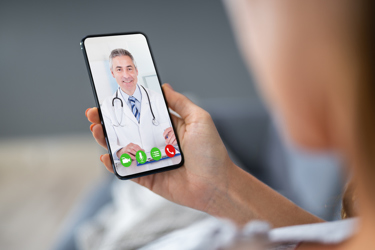Driving Successful Aging In Place With Remote Technologies And Services
By David Hunt, Cosán Group

Seniors seem to be top of mind for entities across the healthcare spectrum these days. With provider budgets stretched, and payer reimbursements shrinking, many are viewing senior care as a market segment that presents a rare opportunity. The market is only growing, too. According to data from the Kaiser Family Foundation, 24.1 million people are now enrolled in Medicare Advantage plans – up 9% from 2019 alone. This rate of growth has many healthcare organizations taking notice.
If done properly, this added focus on aging patients, and the related trend of managing their care outside the physician’s office, should be a win-win for all stakeholders involved. For patients, their care teams are working to provide higher-quality care, leading to improved outcomes, and keeping them in their homes. For providers, properly caring for these patients presents an opportunity to improve lives, while generating more revenue at a time when many practices are struggling.
However, efficiently and effectively caring for older adults and at-risk seniors aging in the home comes with its own unique set of challenges. With in-person care disrupted and older adults more disconnected than ever before, practices need better engagement and care management tools to properly meet their patients where they are. Therefore, providers, healthcare organizations, and payers are hungry for new ways to extend their current care models to improve patient outcomes. By utilizing remote technologies and preventative care coordination tools to analyze, evaluate, and coordinate care plans, providers can do just that – by creating pathways to modern aging to support successful aging in place.
Enabling Modern Aging With Intuitive HIT Solutions
Preventative care management services are a central part of supporting patients aging in place. These services are designed to serve as an extension to the current care models implemented at physician practices and throughout the continuum. However, gaps in care between providers and patients pose a threat to effectively treating this highly sought after, but complex, patient population. To deliver a patient-centric approach to remote care coordination that focuses on closing these gaps, the following techniques and technologies are paramount.
- Chronic care management is central in caring for patients in the home. With support from policies like the Chronic Care Management (CCM) Medicare program, which encourages improved patient outcomes through more visibility and coordination between physicians, there is an industrywide push to better care for the 117 million adults that deal with one or more chronic health conditions. Effective chronic care management starts with engaging and communicating with patients. To succeed under the CCM program and reap the financial benefits it offers, providers must rely on expanded solutions to increase services like scheduling, telehealth, and care management across multiple touchpoints. As a result of enhanced engagement, providers can monitor quality measures, increase patient compliance of care plan objectives, and triage high-risk patients to deliver improved care and outcomes.
- Remote patient monitoring technology has gained significant momentum over the tumultuous past year in healthcare. Providers are using this technology to gather patient health data, such as vital signs, blood pressure, and blood sugar from their homes and securely transmit that information to the patient’s care coordinator. This type of service allows a provider to continuously monitor a patient’s health status remotely and act on the information received as part of their care plan. These monitoring programs allow older adults to live at home longer by closely tracking their health and staying abreast of any changes. For providers, they help reduce hospitalizations and readmissions, which in turn, allows for improved reimbursement and better cost containment.
- The American Psychological Association recently found that 78% of U.S adults say the pandemic is a significant source of stress in their lives, and most aren’t getting the support they need. 61% said they could’ve used more emotional support than they received over the past 12 months, shining a spotlight on the importance of holistic care in driving better health. Holistic care requires providers to treat behavioral health challenges alongside other conditions, so achieving integration among these programs becomes critical. Support services are important for those with mental or behavioral health conditions, ranging from substance abuse, life crises, and stress-related physical symptoms – all of which often affect medical conditions. Integrating behavioral health into existing care models via care coordination and collaboration solutions better allows providers to collaborate and provide coordinated, whole-person care.
Improving outcomes, despite location, is a necessity when caring for at-risk seniors, adults with chronic conditions, or those choosing to age in place. If executed properly, engagement, coordination, and communication tools can go a long way toward helping patients remain safely in the home while simultaneously enabling providers to improve their bottom lines.
About The Author
By David Hunt is the Founder and Chief Marketing & Development Officer at Cosán Group.
